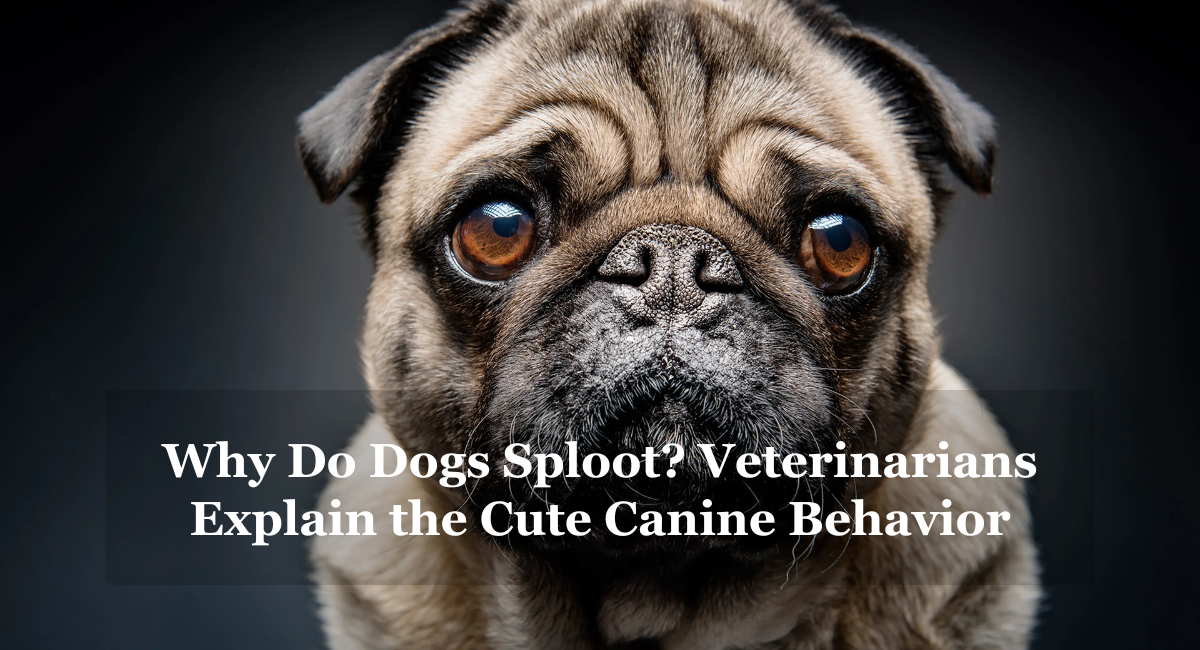Dogs, our loyal companions, often engage in quirky behaviors that leave us both amused and intrigued. One such adorable canine habit that has garnered attention is “splooting.”
But what exactly is splooting, and why do dogs do it? In this comprehensive article, we’ll delve into the intricacies of this charming behavior, offering insights from experienced veterinarians.
Understanding Splooting
What is Splooting?
Splooting refers to the peculiar posture dogs assume when they stretch their hind legs straight out behind them while lying down.
It’s a comical sight, with the dog’s belly flat on the ground and hind limbs fully extended. This behavior is not limited to a specific breed, making it a universal canine quirk.
The Anatomy of Splooting
Veterinarians attribute splooting to the unique anatomy of dogs. Unlike humans, dogs have a different musculoskeletal structure, and splooting is a natural way for them to stretch and relax their muscles.
The posture allows dogs to fully extend their hip joints and lower back, promoting flexibility and relieving tension.
Why Do Dogs Sploot?
Cooling Down and Temperature Regulation
One plausible explanation for splooting is temperature regulation. Dogs lack sweat glands like humans and primarily release heat through panting.
When a dog sploots, it exposes the less furry areas of its belly to the cool surface, aiding in dissipating body heat.
This behavior might be an instinctual response to prevent overheating, especially in warmer weather.
Comfort and Relaxation
Splooting can also be a sign of comfort and relaxation. When a dog feels secure in its environment, it may adopt this posture as a way of letting its guard down.
Dogs often sploot during naptime, suggesting that this position helps them achieve a deeper state of relaxation.
Stretching Muscles and Joints
From a physiological standpoint, splooting serves as an excellent stretching exercise. Dogs, like humans, can experience stiffness and muscle tension, particularly after periods of inactivity.
The splooting position allows dogs to stretch their muscles, promoting joint flexibility and preventing stiffness.
Is Splooting Harmful?
Understanding Normal vs. Abnormal Splooting
While splooting is generally harmless and even beneficial for dogs, it’s essential to distinguish between normal and abnormal instances.
Occasional splooting during relaxation is considered normal, but persistent or sudden changes in splooting behavior might indicate an underlying issue.
When to Consult a Veterinarian
If your dog displays signs of discomfort, pain, or if there is a sudden increase in splooting without an apparent cause, it’s advisable to consult a veterinarian.
These professionals can conduct a thorough examination to rule out any musculoskeletal issues or health concerns that may be contributing to the change in behavior.
Conclusion
In the grand tapestry of canine behavior, splooting stands out as a delightful and harmless quirk. Understanding why dogs sploot involves recognizing the blend of instinct, comfort, and physiological benefits associated with this endearing posture.
As responsible pet owners, observing and appreciating these behaviors enhances our connection with our furry friends.
In conclusion, next time you catch your dog splooting, relish in the fact that it’s not just a cute spectacle but a natural expression of their well-being.
Embrace the quirks that make our dogs unique, and perhaps, in doing so, we strengthen the bond that has made them our cherished companions through thick and thin.
